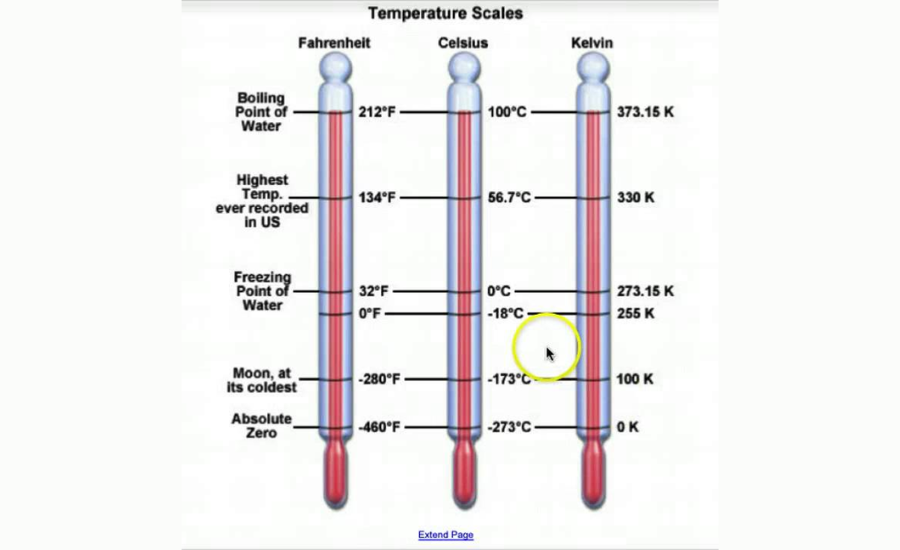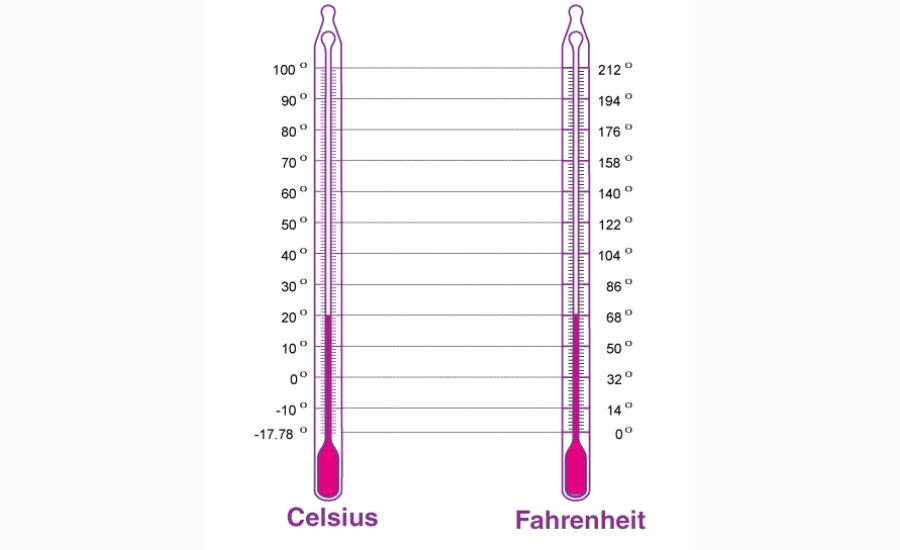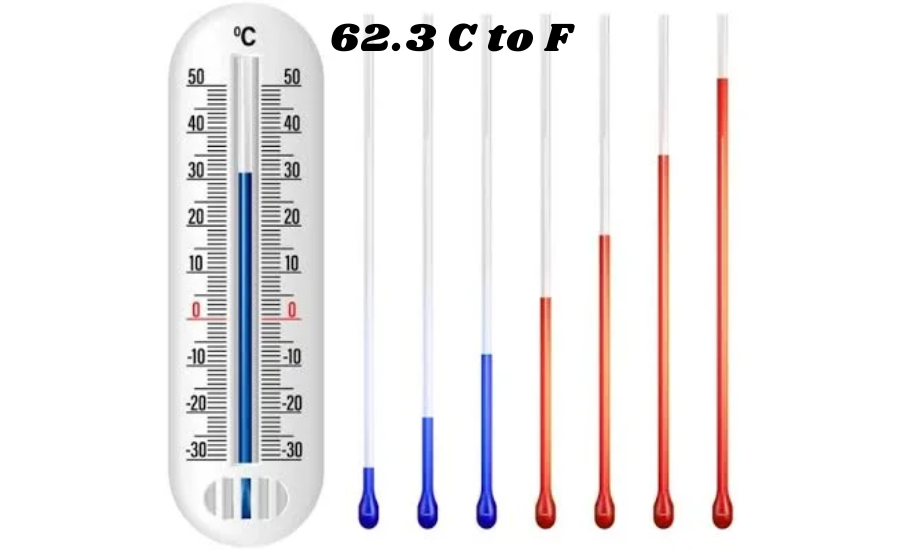Understanding how to convert temperatures is a practical skill that can make everyday tasks much easier. Different regions of the world use different temperature scales, so knowing how to switch between them can be incredibly useful. For instance, if you’re traveling abroad, following a recipe from another country, or working in a field that requires precise measurements, you’ll often need to convert temperatures. This is especially true when you encounter temperatures in Celsius but need them in Fahrenheit, or vice versa.
Let’s look at a specific example: converting 62.3°C to Fahrenheit. We’ll not only go through the steps to make this conversion but also explore why it’s important. Being able to accurately convert temperatures helps you interpret weather forecasts correctly, follow cooking instructions from different regions, and understand scientific data better. By mastering these conversions, you can ensure that you’re always on the right track, whether you’re adjusting a recipe, planning your travels, or analyzing data.
Temperature Scales

| Scale | Developer | Freezing Point of Water | Boiling Point of Water | Typical Usage |
|---|---|---|---|---|
| Celsius | Anders Celsius | 0°C | 100°C | Widely used around the world; metric system |
| Fahrenheit | Daniel Gabriel Fahrenheit | 32°F | 212°F | Common in the United States and its territories |
| Kelvin | Lord Kelvin | 273.15 K | 373.15 K | Used in scientific contexts, starting from absolute zero |
The Celsius scale, named after Swedish astronomer Anders Celsius, is the primary temperature measurement used globally. It is based on the freezing point of water at 0°C and the boiling point at 100°C, making it part of the metric system, which is appreciated for its straightforwardness. In contrast, the Fahrenheit scale, created by Daniel Gabriel Fahrenheit, is used mainly in the United States and its territories. It sets the freezing point of water at 32°F and the boiling point at 212°F. Though less intuitive than Celsius, it remains in common use in certain regions. Lastly, the Kelvin scale, developed by Lord Kelvin, is employed in scientific disciplines. It begins at absolute zero (−273.15°C), the lowest possible temperature, and is essential for precise scientific work.
What Is 62.3 C to F?
To convert 62.3°C to Fahrenheit, you need to use a simple formula. First, you multiply 62.3 by 9/5, which gives you 112.14. Then, you add 32 to that number, resulting in 144.14. So, 62.3°C is roughly equal to 144.14°F.
Knowing how to perform this conversion is quite useful in everyday life. For instance, if you’re following a recipe that lists temperatures in Fahrenheit but you’re more familiar with Celsius, you’ll need to convert the temperature to make sure your dish turns out right. Similarly, in scientific fields, being able to switch between Celsius and Fahrenheit can help in comparing and understanding data from different sources. Mastering these conversions ensures you’re always on point, whether you’re cooking, traveling, or working on scientific experiments.
The Basics Of Celsius And Fahrenheit

Temperature measurement plays a crucial role in our daily lives, with Celsius and Fahrenheit being the two most widely used scales.
Celsius (Centigrade):
Celsius, often referred to as centigrade, is based on the freezing point of water at 0°C and the boiling point at 100°C. This scale is commonly used in scientific contexts and is the standard in most countries around the world. Its straightforward relationship with the physical properties of water makes it an intuitive choice for many applications.
Fahrenheit:
The Fahrenheit scale, developed by Daniel Gabriel Fahrenheit, sets the freezing point of water at 32°F and the boiling point at 212°F. This scale is primarily used in the United States and a few other regions. Although it is less intuitive compared to Celsius, it remains prevalent in specific contexts, especially in the U.S.
Understanding both Celsius and Fahrenheit is crucial for various everyday tasks, such as interpreting weather forecasts, following cooking recipes, and medical monitoring. Being able to convert between these two scales allows for accurate comprehension and application of temperature measurements, making it easier to navigate different contexts where each scale is used.
Why Convert Temperatures?
Converting temperatures is essential for a variety of practical reasons:
- Scientific Research: In scientific experiments, precise temperature measurement is crucial. Different studies or research papers may use different temperature scales, so accurate conversion ensures consistency and reliability in data.
- Travel: When traveling to different countries, you may encounter weather forecasts in unfamiliar temperature scales. Knowing how to convert temperatures helps you better understand local weather conditions and plan your activities accordingly.
- Cooking: Recipes from different regions may use Celsius or Fahrenheit. Converting these temperatures ensures that you cook your dishes at the correct temperature, leading to better results and preventing culinary mishaps.
- Healthcare: Medical thermometers might use various temperature scales depending on the region or device. Accurate temperature conversion is important for monitoring health conditions and ensuring that medical readings are interpreted correctly.
In each of these scenarios, understanding and applying temperature conversion allows for more effective and accurate communication, whether you’re conducting experiments, exploring new places, cooking, or managing health.
Quick Methods For Converting 62.3 C to F
Online Conversion Tools:
Many websites offer easy-to-use temperature conversion calculators. Simply enter 62.3°C into the tool, and it will quickly provide the Fahrenheit equivalent.
Mobile Apps:
Several smartphone apps are designed for temperature conversions. These apps allow you to convert temperatures on the go with just a few taps.
Scientific Calculators:
Most scientific calculators include functions for converting between temperature scales. By inputting the Celsius value and selecting the conversion option, you can swiftly obtain the Fahrenheit result.
Common Errors In Temperature Conversion
Misunderstanding the Formula:
A frequent error in temperature conversion is misapplying the formula. For converting Celsius to Fahrenheit, the correct formula is: multiply the Celsius temperature by 1.8 (or 9/5), and then add 32. It’s important to follow these steps precisely to avoid errors. For example, converting 62.3 C to F should be done as follows:
F=(62.3×1.8)+32\text{F} = (62.3 \times 1.8) + 32F=(62.3×1.8)+32
Getting the formula right ensures you end up with the correct temperature conversion.
Incorrect Calculator Usage:
Another common mistake involves the improper use of calculators. It’s essential to follow the order of operations carefully and double-check your entries. For instance, if using a calculator for temperature conversion, make sure you’re performing the multiplication and addition in the correct sequence. Errors can easily creep in if you rush through the process or enter values incorrectly. Always review your calculations to ensure accuracy.
Best Practices For Accurate Temperature Conversions

Verify with Tools:
Precision is crucial when converting temperatures. To ensure accuracy, use online conversion tools or calculators to double-check your results. These resources can quickly confirm your calculations and help prevent errors.
Master the Conversion Formulas:
Knowing the formulas for temperature conversions can streamline the process. For Celsius to Fahrenheit, use C×95+32\text{C} \times \frac{9}{5} + 32C×59+32. For Fahrenheit to Celsius, apply (F−32)×59(\text{F} – 32) \times \frac{5}{9}(F−32)×95. Memorizing these formulas can speed up and simplify your conversions.
Use Rounding Wisely:
Rounding can make calculations easier without sacrificing accuracy. For most everyday purposes, rounding to one decimal place is sufficient. This approach helps simplify the math while still providing reliable results.
Practice for Proficiency:
Regular practice with temperature conversions will improve your skills and confidence. The more you work with these conversions, the more natural and intuitive the process will become.
Conclusion
Converting 62.3 C to F is a useful skill that comes into play in various contexts, from cooking to scientific research. To convert Celsius to Fahrenheit, you use the formula:
F=(C×95)+32\text{F} = (\text{C} \times \frac{9}{5}) + 32F=(C×59)+32
Applying this formula, for 62.3°C, the calculation is:
F=(62.3×95)+32=144.14\text{F} = (62.3 \times \frac{9}{5}) + 32 = 144.14F=(62.3×59)+32=144.14
So, 62.3°C is approximately 144.14°F.
Understanding temperature scales is essential. Celsius is based on the freezing and boiling points of water (0°C and 100°C) and is widely used globally and in scientific contexts. Fahrenheit, used primarily in the United States, sets the freezing point at 32°F and the boiling point at 212°F. Kelvin, another scale, is used in scientific fields and starts at absolute zero.
Common errors in temperature conversion include misapplying the formula and incorrect use of calculators. To avoid mistakes, double-check calculations, use conversion tools or apps, and be familiar with the correct formulas. Additionally, rounding numbers appropriately and practicing conversions regularly can enhance accuracy and ease.
FAQs: Converting 62.3 C To F
1. What is the formula for converting Celsius to Fahrenheit?
To convert Celsius to Fahrenheit, use the formula:
F=(C×95)+32\text{F} = (\text{C} \times \frac{9}{5}) + 32F=(C×59)+32
For 62.3°C, the conversion is:
F=(62.3×95)+32=144.14\text{F} = (62.3 \times \frac{9}{5}) + 32 = 144.14F=(62.3×59)+32=144.14
2. Why is it important to understand temperature conversion?
Understanding temperature conversion is important for various reasons, including accurately following cooking recipes, interpreting weather forecasts when traveling, ensuring precise scientific measurements, and monitoring health conditions with different thermometer scales.
3. What common mistakes should I avoid in temperature conversion?
Common mistakes include misapplying the conversion formula and incorrect use of calculators. Ensure you use the correct formula and double-check your calculations. Following the proper order of operations can help avoid errors.
4. How can I quickly convert temperatures between Celsius and Fahrenheit?
You can use several tools for quick conversions:
- Online Calculators: Websites offer instant temperature conversion tools.
- Smartphone Apps: Apps designed for temperature conversions can provide real-time results.
- Scientific Calculators: Many scientific calculators have built-in functions for temperature conversions.
5. How can I ensure accuracy in temperature conversions?
To ensure accuracy, use online tools or apps to double-check your calculations. Memorize the conversion formulas for quicker results, round numbers appropriately when needed, and practice regularly to improve your proficiency.
Don’t miss the latest news and updates visit: The News!

